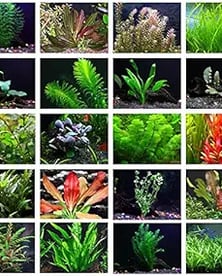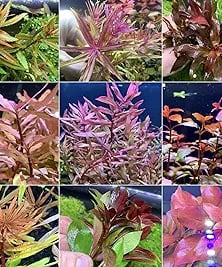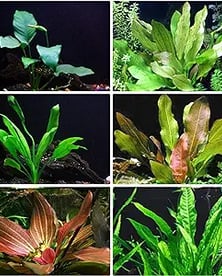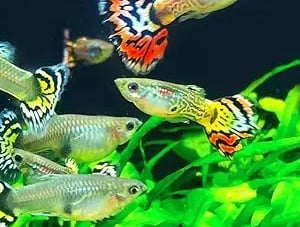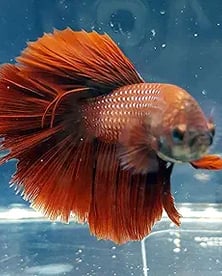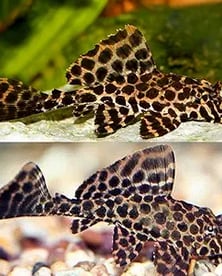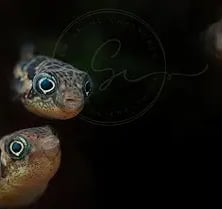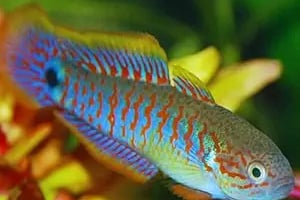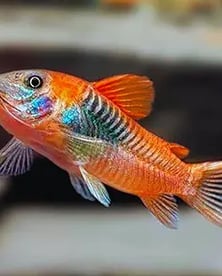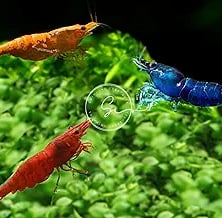

Freshwater Aquarium Living Plants & Pets
Creating a thriving freshwater aquarium involves selecting the right plants and pets. This combination not only enhances the aesthetic appeal but also promotes a healthy ecosystem.
Live Aquarium Plants
Live Aquarium Pets
Selecting the right freshwater aquarium plants and pets involves careful consideration of several factors to ensure a harmonious and thriving aquatic environment. Here are key points to consider when making your choices:
Factors to Consider When Selecting Freshwater Aquarium Plants
1. Lighting Requirements
Low Light Plants: Suitable for tanks with minimal lighting, such as Java Fern and Anubias.
Medium to High Light Plants: Require stronger lighting, like Amazon Sword and Dwarf Baby Tears. Ensure your lighting system can meet the needs of your chosen plants.
2. Substrate Type
Nutrient-Rich Substrates: Beneficial for root-feeding plants like Amazon Swords and Cryptocoryne.
Inert Substrates: Gravel and sand can be used with root tabs or liquid fertilizers to supplement nutrient requirements for plants.
3. Growth Rate and Size
Fast-Growing Plants: Like Vallisneria, can quickly fill in spaces but may require more frequent trimming.
Slow-Growing Plants: Such as Java Fern, need less maintenance and are ideal for low-maintenance setups.
4. Water Parameters
Temperature: Ensure the plants you select can thrive within the temperature range of your aquarium.
pH and Hardness: Some plants have specific pH and water hardness requirements. Research compatibility with your water conditions.
5. CO2 Requirements
Low CO2 Plants: Many plants like Java Moss and Anubias do not require CO2 supplementation.
High CO2 Plants: Plants like Dwarf Baby Tears thrive with added CO2, which can be provided through CO2 injection systems.
6. Aquascaping Needs
Foreground Plants: Smaller plants that grow low to the substrate, such as Dwarf Baby Tears.
Midground Plants: Medium-sized plants that provide a transition between the foreground and background.
Background Plants: Tall plants like Vallisneria and Amazon Swords that create a backdrop and hide equipment.
Factors to Consider When Selecting Freshwater Aquarium Pets
1. Tank Size
Small Tanks: Suitable for small species like Betta fish, Cherry Shrimp, and Neon Tetras.
Large Tanks: Can accommodate larger or more active species like Angelfish and larger schools of fish.
2. Compatibility
Temperament: Ensure the fish you select have compatible temperaments. Avoid mixing aggressive species with peaceful ones.
Schooling Behavior: Some fish, like Neon Tetras and Corydoras Catfish, thrive in groups and should be kept in schools.
3. Water Parameters
Temperature: Match the fish species to the temperature range of your tank.
pH and Hardness: Different fish have different preferences for pH and water hardness. Ensure compatibility with your existing water conditions.
4. Dietary Needs
Omnivores: Most community fish fall into this category and can be fed a varied diet of flakes, pellets, and occasional live or frozen foods.
Herbivores: Species like Otocinclus Catfish require a diet rich in algae and plant matter.
Carnivores: Some species, like certain types of Betta fish, may prefer live or frozen prey.
5. Behavior and Activity Level
Active Swimmers: Fish like Zebra Danios require more swimming space and open areas.
Bottom Dwellers: Species like Corydoras and Plecos need substrate to forage and hide.
6. Maintenance and Care
Hardiness: Beginner-friendly fish are more resilient to changes in water conditions, making them easier to care for.
Breeding: Consider whether you want species that breed easily, like Guppies and Platies, which can quickly increase in population.
Creating a Balanced Ecosystem
1. Balance Between Plants and Fish
Natural Filtration: Plants help absorb excess nutrients and provide natural filtration, which benefits the fish.
Oxygenation: Plants produce oxygen during photosynthesis, which is vital for the health of your fish.
2. Aquascaping Layout
Hide and Seek: Provide hiding spots with plants and decorations for shy or nocturnal species.
Open Swimming Areas: Ensure there is enough open space for active swimmers.
3. Regular Monitoring
Water Quality: Regularly test water parameters to ensure they remain within the ideal range for both plants and fish.
Health Checks: Monitor the health of your plants and fish, watching for signs of disease or stress.
By carefully considering these factors, you can create a harmonious and thriving freshwater aquarium that showcases the beauty of both plants and fish. This thoughtful approach will help ensure a balanced, healthy environment for all its inhabitants.
Subscribe to our newsletter
Enjoy exclusive special deals available only to our subscribers.












